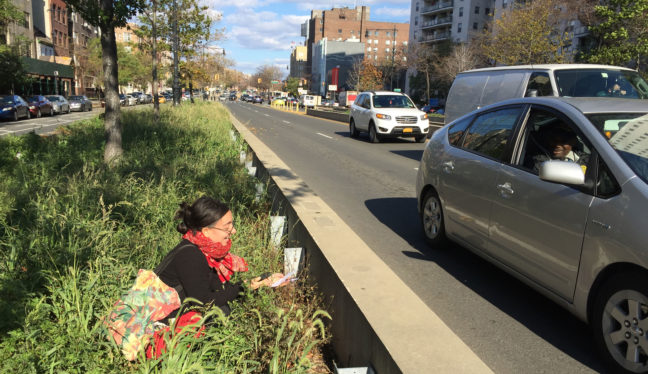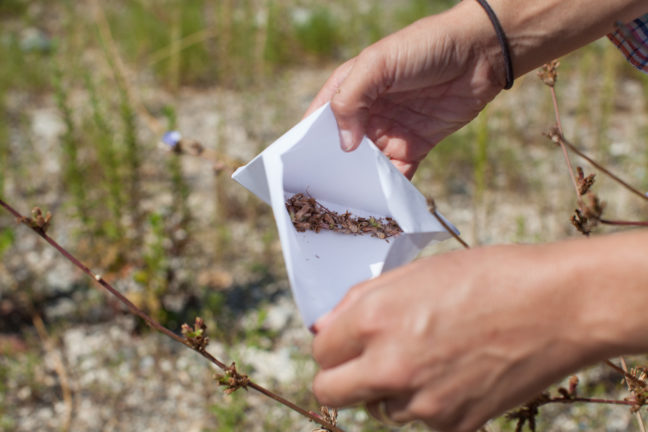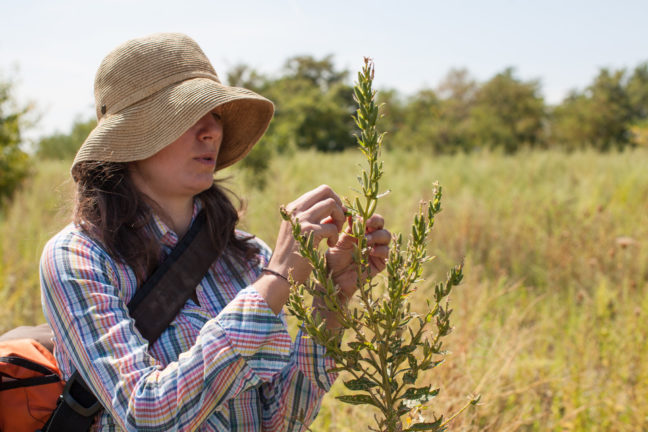Thank you for your interest in contributing to the Next Epoch Seed Library! NESL is an artist run project that encourages public participation. We think seed gathering is an enjoyable activity that encourages contact between humans and the plant species that form the basis of our urban ecosystems. Please read the guidelines below and get in touch with any questions. We’d be happy to list you on our website as a contributing member of NESL.

Seed Collecting/Saving Guidelines
NESL is primarily interested in plant species that live in close association with humans, but that have not been planted or maintained purposefully; in short, weeds! Growing where others can’t or won’t, the plants held in our seed bank are those best adapted to live in the long shadow we throw on the landscape. They are companion plants for the so-called Anthropocene age.
- Where to collect: We are especially interested in those wild urban plants that have faced substantial challenges or harsh conditions, like plants growing on superfund sites or brown fields, out of the side of buildings or cracks in the sidewalk, or from other former or current sites of human infrastructure or activity. Any vacant lot, abandoned street tree pit, or untended park edge is also a great place to look.
- What to collect: If you’re new to plant identification, choose a few plant species to start with that you find particularly interesting or intriguing. If you’re not sure where the seed is, just collect the whole seed-producing portion of the plant (the tuft at the top of a grass, the dried base that remains when a flower withers).
- Date, location, and photos: For each species you collect, note the date and location, as well as a description of the site. Whether or not you can identify the plant, take several photos, and send them to us over email or with your submission:
- Close up of the leaves
- Flowers or berries
- Whole plant
- Section of the plant against a white background if possible
- When to collect: Different species create mature, fully-developed seeds throughout the spring, summer and fall. Look for pods, fruits, flowers that have died back, grasses that have dried and yellowed. In general, a mature seed turns brown or black, and seeds can be shaken off or easily removed. If a seed is difficult to remove, it probably is not ready.
- How to store: Just make sure you store whatever you collect in a breathable container (standard mailing envelopes work great!). If you won’t submit it to us right away, it can be a good idea to lay the plant material out flat so it can dry thoroughly, then store it somewhere relatively cool: away from heaters, or ideally in a sheltered area outdoors.
- How to submit: Send us your materials through the mail (address above) or in person by appointment.

Some basic reminders
- Look for “spontaneous plants” in urban areas that are not cultivated by people.
- Collect mature seeds (ripe fruit, dried grasses, seeds that have hardened and turned black/brown).
- Allow collected seeds/plant material to air dry for a few days, then store in breathable containers like paper envelopes.
- Note the date and location for each species gathered.
- Photograph habitat and plant from which seeds were gathered, including one photo of a segment of the plant against a white background where possible (a piece of paper is fine).
Thank you!
